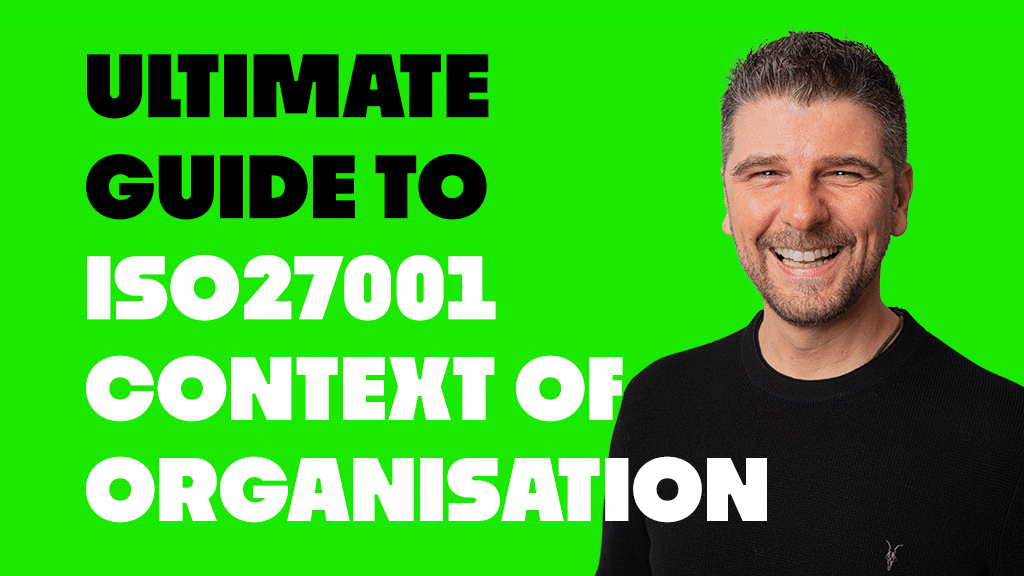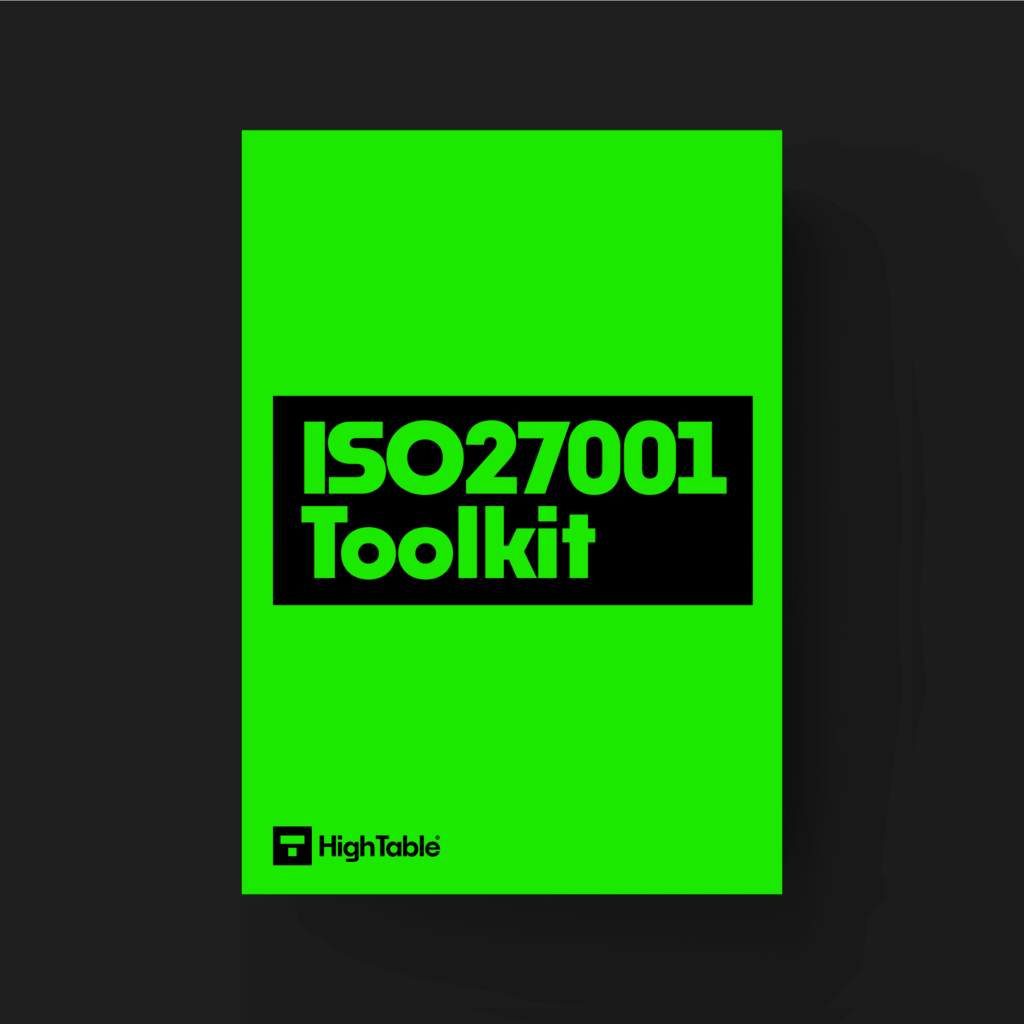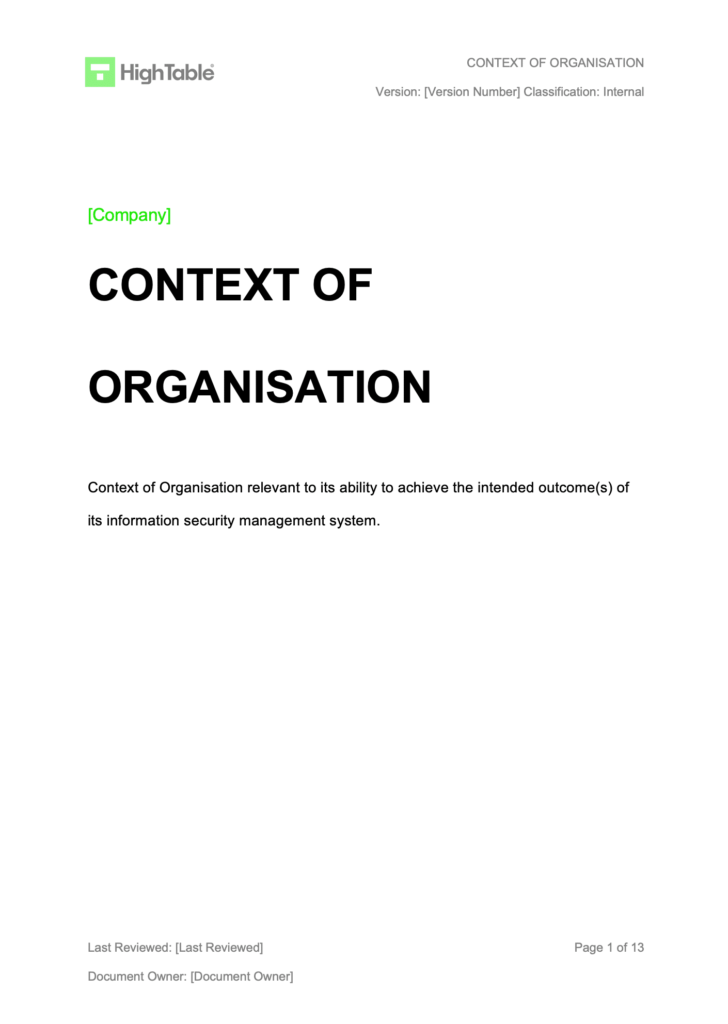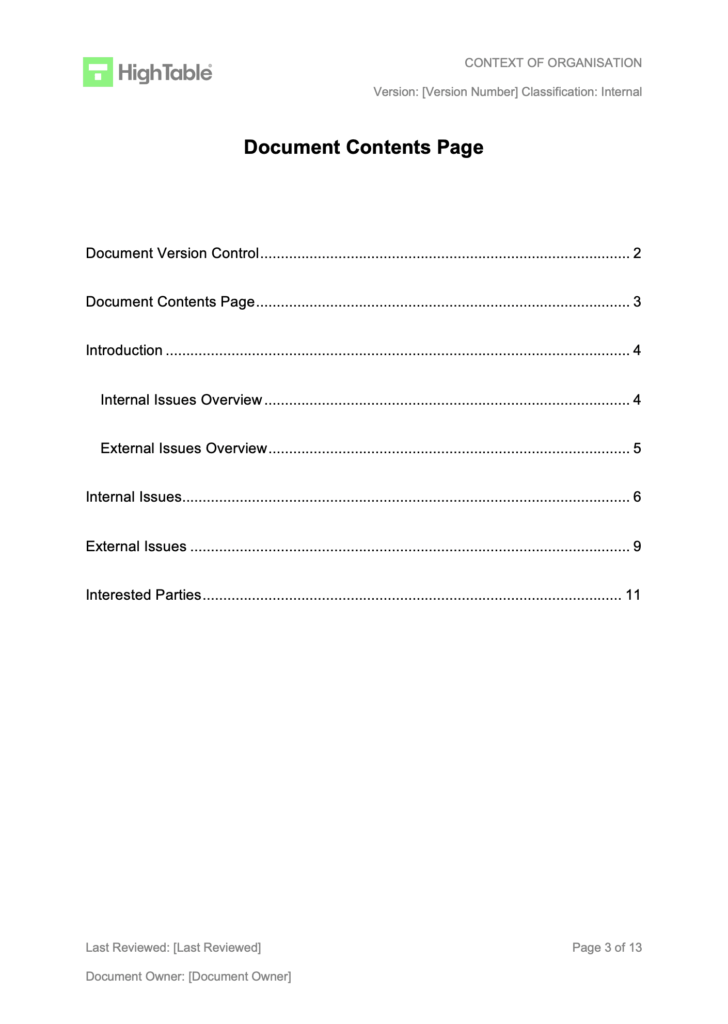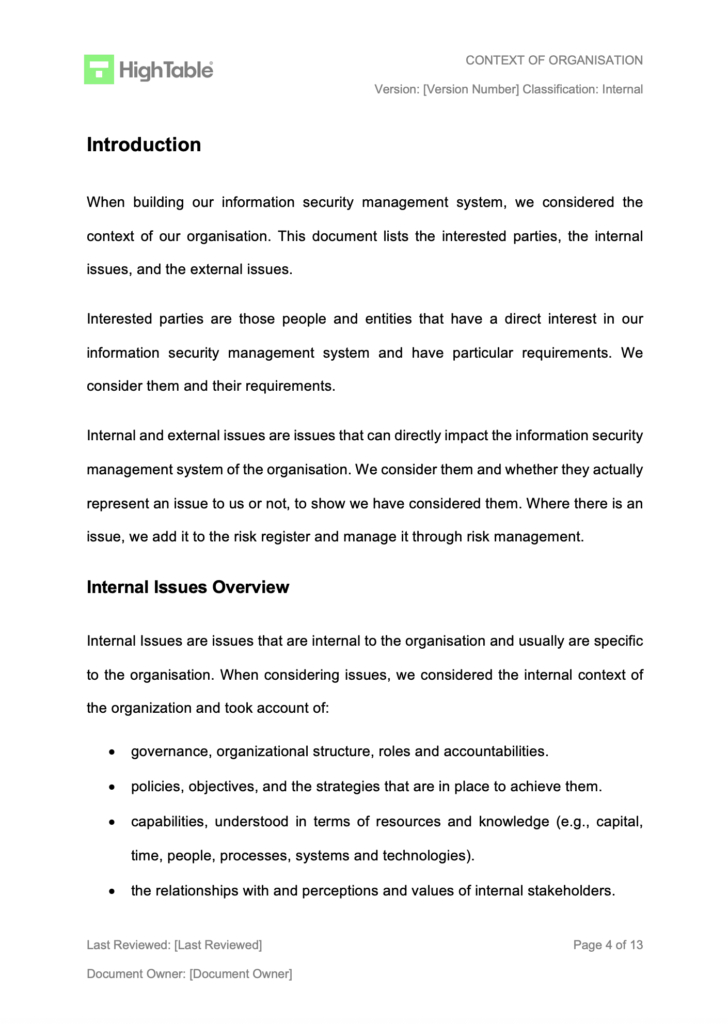Introduction
In this ISO 27001 Context of Organisation Ultimate Guide I show you everything you need to know about the ISO 27001 Context of Organisation and exactly what you need to do to satisfy it to gain ISO 27001 certification.
You will learn
- What is ISO 27001 Context of Organisation?
- How to write an ISO 27001 Context of Organisation document
- ISO 27001 Internal Issues, External Issues and Interested Parties with Examples
Table of contents
What is ISO 27001 Context Of Organisation?
The ISO 27001 Context of Organisation document is a simple document that is also light touch risk document.
It sets out what the risks are to your information security management system (ISMS), who the main interested parties are, what their requirements are and how the information security management system (ISMS) satisfies them.
ISO 27001 Context of Organisation frames risk to the information security management system (ISMS) as internal issues and external issues. What are the issues both internally and externally that can affect the effectiveness of the information security management system (ISMS) and its ability to meet its stated objectives.
The context of organisation looks at things that can influence the information security management system of an organisation in a structured way and records them. It allows you to tweak and bespoke the information security management system based on some key considerations. It looks at internal and external influences as well as key stakeholders and their requirements.
Relevant ISO 27001 Clause
ISO 27001 Context of Organisation is covered in ISO 27001:2022 Clause 4.1. There is a detailed guide to ISO 27001 Clause 4.1 Understanding The Organisation And Its Context.
ISO 27001 Context of Organisation Template
The comprehensive ISO 27001 Context of Organisation Template is designed to fast track your implementation and give you an exclusive, industry best practice ISO 27001 Template that is pre written and ready to go. It is complete with common internal issues, external issues and interested parties to take the guess work out.
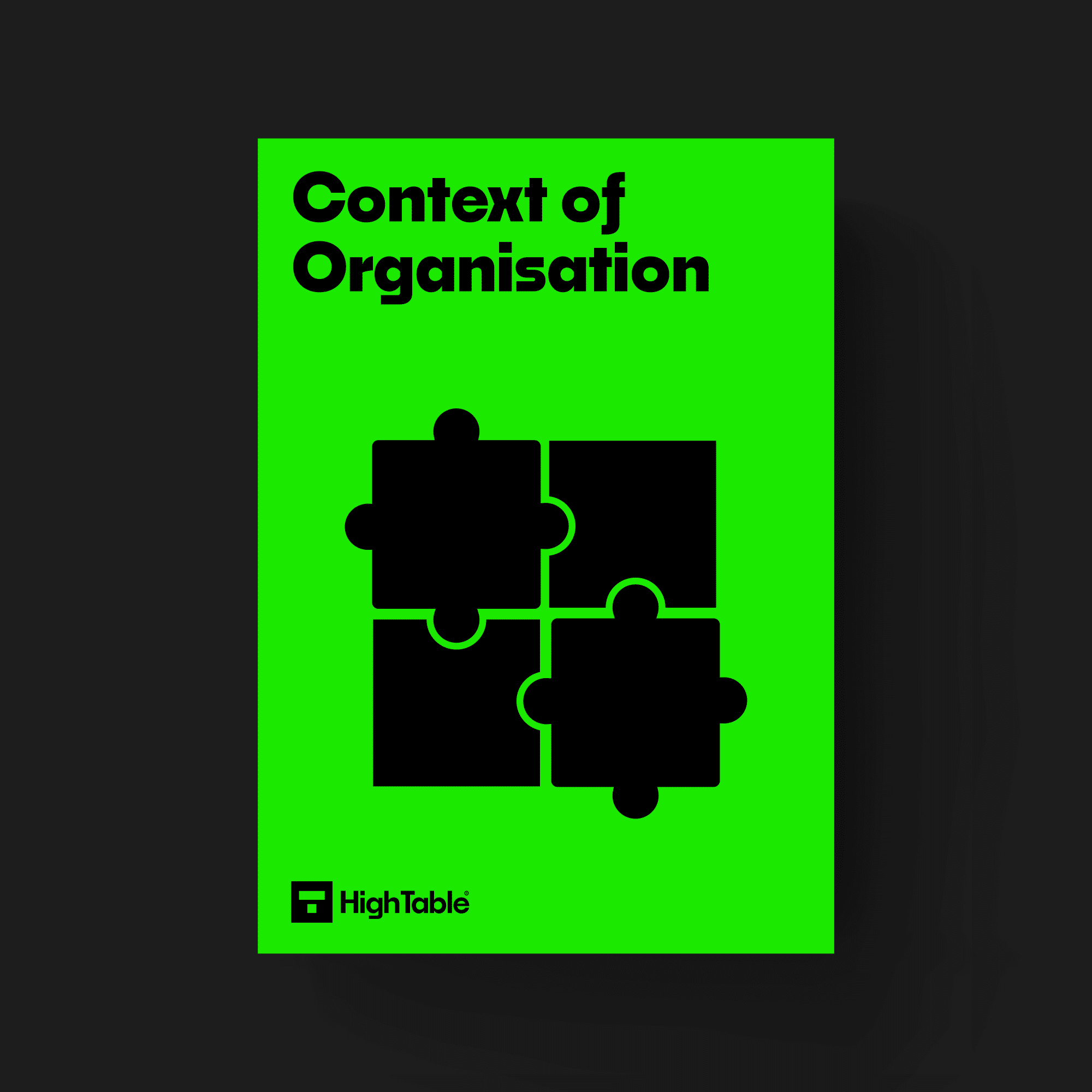
DO IT YOURSELF ISO 27001
All the templates, tools, support and knowledge you need to do it yourself.
ISO 27001 Context of Organisation Example
This is a great example of the ISO 27001 Context of Organisation . Taking the first 3 pages being the contents of what it includes. You can also view a detailed
You can view a detailed example ISO 27001 Context of Organisation PDF.
ISO 27001 Internal Issues and Examples
What are ISO 27001 Internal Issues?
ISO 27001 Internal Issues are the things internal to the organisation that could impact the information security management system. These are typically in the control of the organisation and the organisation is often able to influence them directly.
If we consider examples of internal issues we can consider the following:
- Having competent and experienced resources to run and information security management system (ISMS)
- Having the support and buy in of the board, shareholders and leadership
- Having an affective governance structure in place
ISO 27001 External Issues and Examples
ISO 27001 External Issues are the things external to the organisation that could impact the information security management system. These are typically outside the control of the organisation and the organisation is often unable to influence them directly.
If we consider examples of internal issues we can consider the following:
- Legal and Regulatory Requirements
- The ecomomy
- The availability of effective workforce
- Competitors
- Global Politics
ISO 27001 Interested Parties and Examples
ISO 27001 Interested Parties are the people, both internal and external to the organisation, that have requirements and expectations on the information security management system. Their requirements may require changes to the information security management system and the information security controls that are implemented.
Examples of ISO 27001 Interested Parties
- Shareholders
- Customers
- Staff
- Regulators
- Law Makers
- Auditors
How to implement ISO 27001 Context of Organisation
How to write the context of organisation document
In this first YouTube tutorial video we show you how to create and ISO 27001 Context Document and Walkthrough the ISO 27001 Context of Organisation Template
How to implement the context of organisation requirement
In this second YouTube tutorial video we show you how to implement the requirements of the standard and specifically How to implement ISO 27001 Clause 4.1 Understanding The Organisation And Its Context
ISO 27001 Context of Organisation Contents Page
First we are going to look at the context of organisation contents. As we go through the creation of our document we are going to look at
- Document Contents Page
- Introduction
- Internal Issues Overview
- External Issues Overview
- Internal Issues
- External Issues
- Interested Parties
ISO 27001 Context of Organisation FAQ
The purpose of the ISO 27001 context of organisation document is ensure the information security management system is effective by identifying the internal issues, external issue and interested parties requirements and ensuring that they are addressed.
The effectiveness of the information security management system can be directly and negatively affected by interested parties, internal issues and external issues. By documenting what they are and doing a full assessment you have the best chance to address them and ensure an effective management system from the implementation stage all the way through its operational lifecycle.
Responsibility will vary from company to company but usually the ISO 27001 context of organisation is the responsibility of the information security manager.
Internal and external issues as well as the requirements of interested parties should be addressed directly in the information security management system (ISMS)
You identify internal issues by conducing analysis and working to the best practice ISO 27001 context of organisation template that is populated with common examples.
You identify external issues by conducing analysis and working to the best practice ISO 27001 context of organisation template that is populated with common examples.
There are many tools and techniques to identify interested parties including doing a stakeholder analysis.
High Table have an exclusive, fully populated ISO 27001 Context of Organisation Template you can download.
The ISO 27001 Context of Organisation template is included in the Ultimate ISO 27001 Toolkit.
You can download the example ISO 27001 Context of Organisation PDF at the High Table website.
ISO 27001 Clause 4.1 Understanding The Organisation And Its Context

